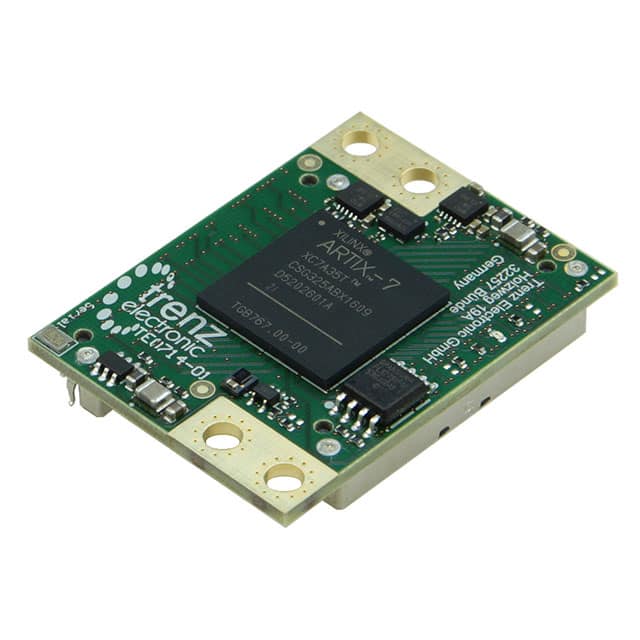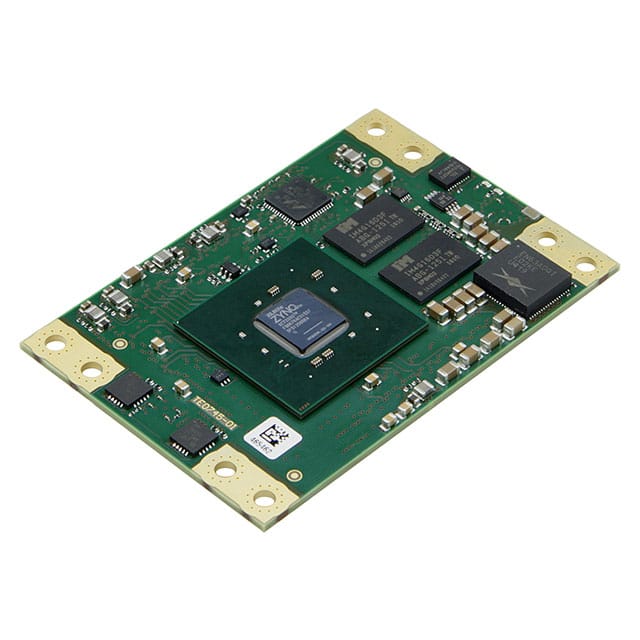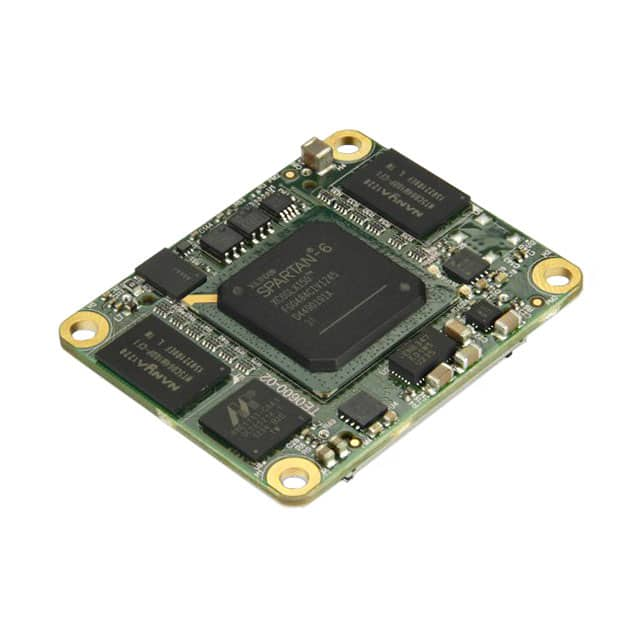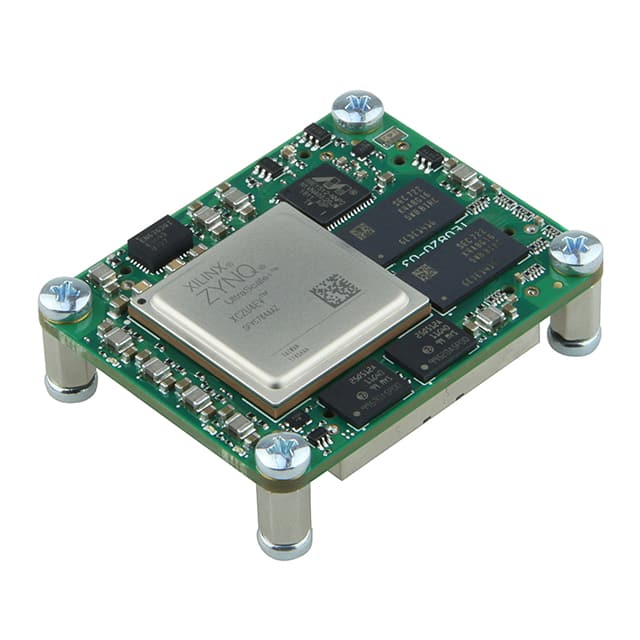TE0723-02M Product Introduction:
Trenz Electronic GmbH Part Number TE0723-02M(Embedded - Microcontroller, Microprocessor, FPGA Modules), developed and manufactured by Trenz Electronic GmbH, distributed globally by Jinftry. We distribute various electronic components from world-renowned brands and provide one-stop services, making us a trusted global electronic component distributor.
TE0723-02M is one of the part numbers distributed by Jinftry, and you can learn about its specifications/configurations, package/case, Datasheet, and other information here. Electronic components are affected by supply and demand, and prices fluctuate frequently. If you have a demand, please do not hesitate to send us an RFQ or email us immediately sales@jinftry.com Please inquire about the real-time unit price, Data Code, Lead time, payment terms, and any other information you would like to know. We will do our best to provide you with a quotation and reply as soon as possible.
Introducing the TE0723-02M, a cutting-edge product from Trenz Electronic GmbH that is set to revolutionize the world of embedded systems. This compact and powerful module is designed to meet the demands of a wide range of applications, making it the perfect choice for developers and engineers.
The TE0723-02M boasts an impressive array of features that set it apart from the competition. Powered by a Xilinx Zynq-7000 SoC, this module combines the flexibility of an FPGA with the processing power of an ARM Cortex-A9 processor. With 512MB DDR3 RAM and 16MB QSPI Flash, it offers ample memory for even the most demanding applications. Additionally, it supports a wide range of interfaces, including Ethernet, USB, and HDMI, ensuring seamless connectivity.
This versatile module finds its application in various fields, including industrial automation, robotics, and medical devices. Its FPGA capabilities make it ideal for implementing complex algorithms and real-time processing, while its ARM processor enables efficient control and communication. Whether you are developing a high-performance control system or a sophisticated image processing application, the TE0723-02M is the perfect solution.
In conclusion, the TE0723-02M from Trenz Electronic GmbH is a game-changer in the world of embedded systems. With its powerful features and wide range of applications, it is sure to meet the needs of developers and engineers across industries. Experience the future of embedded systems with the TE0723-02M.
Microcontroller Microcontroller is a microcomputer system that integrates core components such as central processing unit (CPU), memory (RAM, ROM), input and output interface (I/O), and timer on a single chip.Microprocessor is the core operation and control component of computer system. It is responsible for executing instructions, processing data and communicating with external memory and equipment.FPGA (Field Programmable Gate Array) module, that is, field programmable gate array, is a kind of chip that users can customize the logic function according to their needs. FPGA contains a large number of configurable logic blocks and programmable interconnect resources, which can be programmed by the user to configure into the desired digital circuit. is a microcomputer system that integrates core components such as central processing unit (CPU), memory (RAM, ROM), input and output interface (I/O), and timer on a single chip. A Microprocessor is the core computing and control component of a computer system, responsible for executing instructions, processing data, and communicating with external memory and devices. A Field Programmable Gate Array (FPGA) module, also known as a field programmable gate array, is a chip that allows users to customize logic functions as needed. FPGA contains a large number of configurable logic blocks and programmable interconnect resources, which can be programmed by the user to configure into the desired digital circuit.
Application
Microcontroller is widely used in smart home, industrial automation, automotive electronics, consumer electronics and other fields, through the execution of preset procedures to control external devices, to achieve intelligent operation. Its advantage is that it can respond to external events in real time and improve the automation level and reliability of the system. Microprocessor has higher computing power and greater memory space, and is suitable for more complex application scenarios, such as personal computers, servers, and workstations. Microprocessors direct the operation of computer systems by executing programs stored in memory and are a key determinant of computer system performance. Its advantages lie in its powerful data processing capabilities and wide compatibility, and the ability to support multiple operating systems and applications. The Field Programmable Gate Array (FPGA) module is suitable for applications that require fast iterative design and high performance computing, such as communications, image processing, and video codec. The advantages of FPGA modules are their reconfigurability and efficient parallel computing capabilities, which can significantly shorten product development cycles and improve system performance.
FAQ about Embedded - Microcontroller, Microprocessor, FPGA Modules
-
1. What is the difference between a microcontroller and a microprocessor?
A microcontroller (MCU) is a single-chip system that integrates a processor, memory (RAM and ROM), and peripherals (e.g., timers, I/O ports) and is typically used to control simple tasks. Microprocessors (MPUs) are stand-alone processing cores that require external memory and peripherals and are suitable for more complex computing tasks.
-
2. What scenarios are FPGAs, microprocessors and microcontrollers suitable for?
Microcontrollers: suitable for low-power, small embedded systems such as sensors, home appliances, smart watches, etc.
Microprocessor: suitable for scenarios requiring complex computation and operating system support, such as smartphones, tablets, PCs, etc.
FPGA: for applications that require high-performance parallel processing, custom hardware logic, such as image processing, encryption, communication and high-frequency trading systems.
-
3. Is there a big difference in power consumption between microcontrollers and FPGAs?
Generally speaking, microcontrollers consume less power than FPGAs and are suitable for low-power scenarios. FPGAs usually consume more power in high-load tasks due to their high-performance parallel processing capabilities, but some low-power FPGAs can be used in energy-efficient designs.
 Lead free / RoHS Compliant
Lead free / RoHS Compliant






























